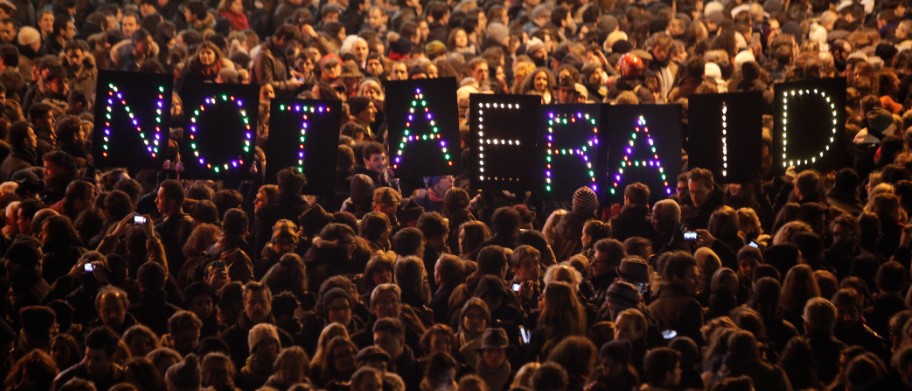Two militant sieges have taken place in Paris. One happened Wednesday, January 7, which caused the death of 12 people including 10 cartoonists and columnists of the satirical magazine Charlie Hebdo, and the other happened Friday, January 9, which led to the death of several hostages and a suspect at a kosher supermarket near Paris’ Porte de Vincennes. The probable connection of the two incidents is still under investigation by the police.
Wednesday’s attack on Charlie Hebdo left the city in mourning on Thursday. Thousands gathered at a vigil held in the center of Paris to mourn the dead, but also as a protest for the freedom of speech. Vigils in memory of the cartoonists and in support of the freedom of speech were held simultaneously across the world in Lyon, Toulouse, Berlin, London, Sydney, Brussels, among other cities, with protesters holding the placards “Je suis Charlie” (“I am Charlie”).
One of the suspects in the Charlie Hebdo attack, Hamyd Mourad, 18, surrendered to the police, while the other two, the Parisian brothers Chérif and Saïd Kouachi, 32 and 34, attempted an escape but were killed in a police raid early Friday. One of the suspects of the kosher grocery shop incident, Amedy Coulibaly, 32, was killed when the police stormed the supermarket. The other suspect, Hayat Boumeddienne, 26, is still on the run. She fled the scene in the confusion of the freeing of the hostages.
Europe has been shocked by the extremity of the violence, and so has been the world. The question that needs to be asked first and foremost is who these suspects were. The Kouachi brothers are being linked to Islamist extremism, as the younger brother was convicted for his participation in a jihadist recruitment ring in Paris in 2008. Coulibaly shared a “high profile” with Chérif Kouachi by spending time in prison for assisting the escape of Islamist militant, Smain Ali Belkacem, from jail.
It seems only natural that the horror and violence that had been haunting Paris for the past three days should be tagged “terrorism” and the gunmen who killed civilians “terrorists.” In fact, media across the world were quick to follow President Francois Hollande’s statement in defining the shootings as “terrorist operations,” and the attacks “barbaric.”
President Barack Obama confirmed, perhaps unsurprisingly, in a condolence speech that “the world has seen once again what terrorists stand for.” Obama said, “They have nothing to offer but hatred and suffering. We stand for freedom and hope and the dignity of all human beings. That is what the city of Paris represents to the world and that spirit will endure forever, long after the scourge of terrorism is banished from this world.” But it is precisely in such a time of horror that one should rethink the “War on Terror,” the governmental and corporate operations that hide behind the quick tagging of “terrorism” and “terrorists.”
Violence against civilians is, undoubtedly, to be condemned. But condemnation of violence under the name of the “War on Terror” only rationalizes the elimination of enemies in the international military campaign led by the United States as the absolute enemy of humanity, and in this case the “neutralization of terrorists” in Paris. But the quest for the cause of violence should not end in “neutralization,” or the naming of it as “terrorism,” but rather, it can only end in the understanding of the conditions that prompted the acts of violence.
The slogan was first used by Present George W. Bush after the September 11 attacks to promote United States’ military intervention in Afghanistan, and continues to be used by the Obama administration. It should also be noted that France was the first ally that joined the United States in airstrikes against the Islamic State of Iraq (ISIS) in September last year.
Whether the gunmen were connected with ISIS is still uncertain. But Muslims in France and all over world already find themselves forced to apologize for actions that they have not committed or sympathized with.
Analysis by Joel Levi
